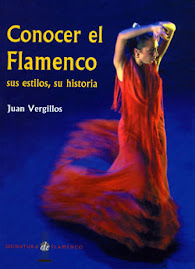Today, in Spain's highways and sideway road ditches anonymous mass graves are still to be found. These are the remains of those executed during the Civil War (1936-1939) due to their fielty and sympathies to the II Republic. Such as, the well-known case of the renouned poet, Federico García Lorca, in the ravine of Viznar, near Granada. Other Republican intellectuals, politicians, scientists, etc. were subjected to repression and exile as well for their political beliefs: Miguel Herenandez died in the Franco jails; Alberti, the poet, was sent to exile in Buenos Aires; Manuel de Falla died in Cordoba, Argentina; La Pasionaria could only return to Spain after death of Franco in 1977.
 |
| Chato de las Ventas, flamenco singer, executed in Cáceres, 1936 |
In flamenco, there were also men and women who were shot, exiled, and retaliated. This representation tells a story silent for 75 years. For the first time, “Flamenco and Republic” puts Spain's still open wounds, often considered taboo, on the stage. This seemingly historic past still outweighs the flagstones of present day Spain: Judge Baltasar Garzón is now undergoing a judgicial process because of his previous intentions to investigate these same mass graves and crimes of the past Franco regime.
 |
| Corruco de Algeciras, flamenco singer and composer, died in the Ebro front, 1937 |




No hay comentarios:
Publicar un comentario